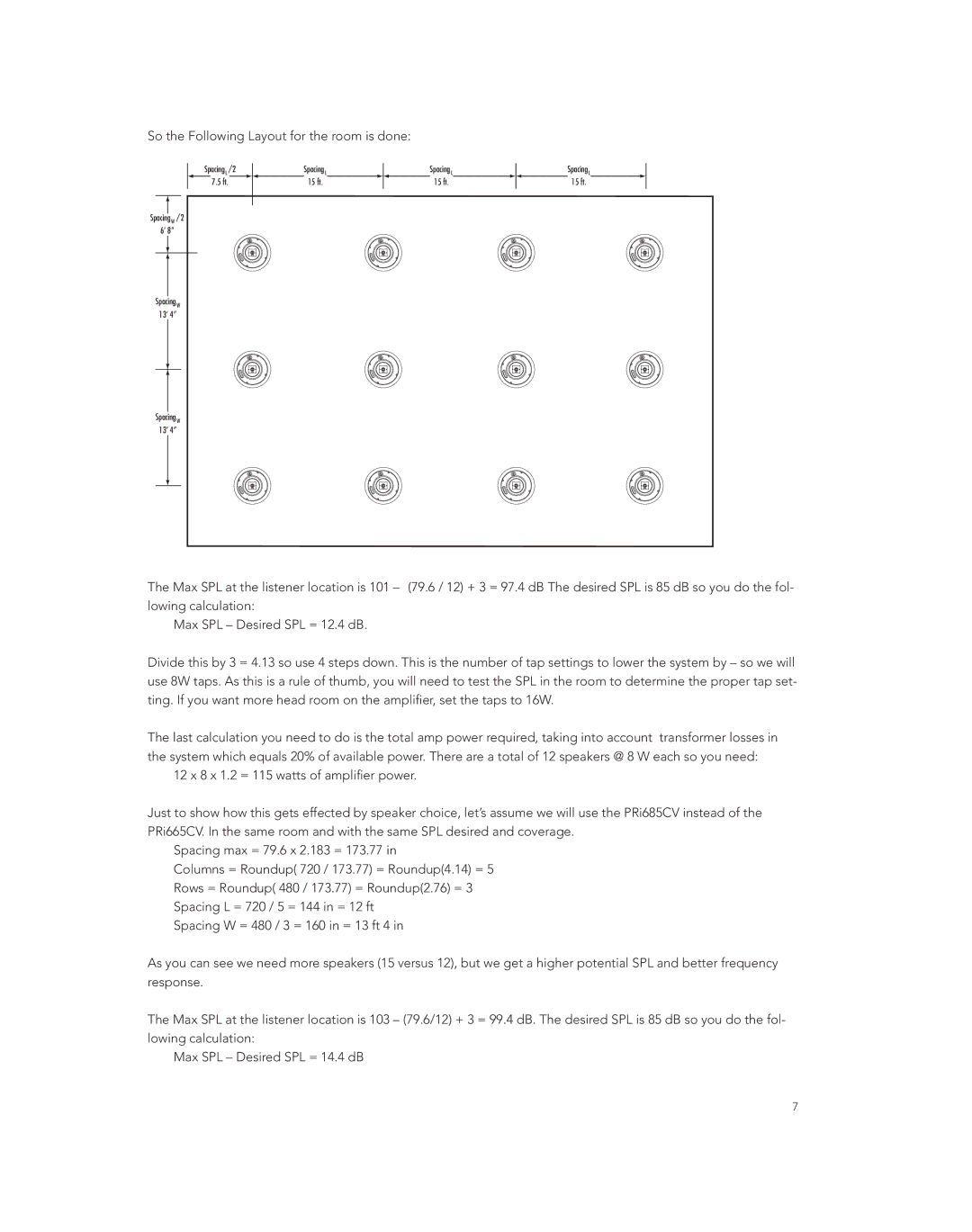
So the Following Layout for the room is done:
|
| ||||||||||
| Ç°xÊvÌ° |
|
|
|
| £xÊvÌ° |
|
|
|
| £xÊvÌ° |
|
|
|
|
|
|
|
|
|
|
|
|
ȽÊn»
£Î½Ê{»
£Î½Ê{»
£xÊvÌ°
The Max SPL at the listener location is 101 – (79.6 / 12) + 3 = 97.4 dB The desired SPL is 85 dB so you do the fol- lowing calculation:
Max SPL – Desired SPL = 12.4 dB.
Divide this by 3 = 4.13 so use 4 steps down. This is the number of tap settings to lower the system by – so we will use 8W taps. As this is a rule of thumb, you will need to test the SPL in the room to determine the proper tap set- ting. If you want more head room on the amplifier, set the taps to 16W.
The last calculation you need to do is the total amp power required, taking into account transformer losses in the system which equals 20% of available power. There are a total of 12 speakers @ 8 W each so you need:
12 x 8 x 1.2 = 115 watts of amplifier power.
Just to show how this gets effected by speaker choice, let’s assume we will use the PRi685CV instead of the PRi665CV. In the same room and with the same SPL desired and coverage.
Spacing max = 79.6 x 2.183 = 173.77 in
Columns = Roundup( 720 / 173.77) = Roundup(4.14) = 5 Rows = Roundup( 480 / 173.77) = Roundup(2.76) = 3 Spacing L = 720 / 5 = 144 in = 12 ft
Spacing W = 480 / 3 = 160 in = 13 ft 4 in
As you can see we need more speakers (15 versus 12), but we get a higher potential SPL and better frequency response.
The Max SPL at the listener location is 103 – (79.6/12) + 3 = 99.4 dB. The desired SPL is 85 dB so you do the fol- lowing calculation:
Max SPL – Desired SPL = 14.4 dB
